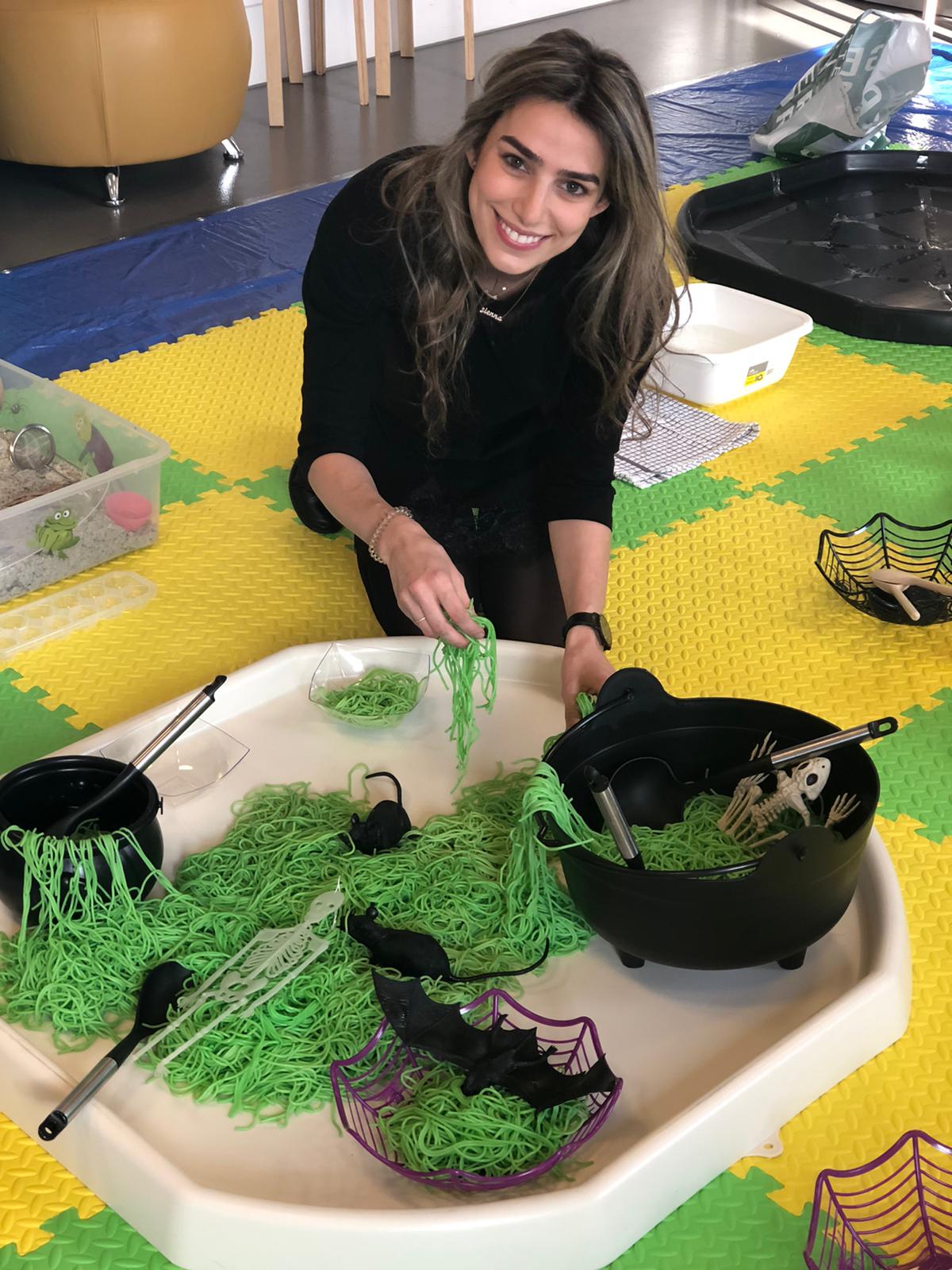The following article is written by Cerine from The Baby Scoop. Cerine is a mum and a montessori trained teacher with many years of experience working with babies and toddlers. Cerine and the baby scoop team run messy and sensory play classes for babies and toddler in London. Website: https://www.thebabyscoop.co.uk/ and instagram: https://www.instagram.com/thebaby__scoop/

Messy and sensory play are extremely hands-on sensory activities, which are open-ended and stimulate all of the senses including touch, smell, taste, sound and sight. These are all vital for your child’s learning and development in their early years.
The more babies and toddlers engage in messy and sensory play, the more they will benefit from the following:
Brain Development and Cognitive Growth
Sensory play forms strong neural pathways in the brain and allows for multiple connections to take place, meaning a baby makes sense of the world around them through this type of play.
Increase Sensory Awareness and Decreases Sensitivity to Texture
The more they are exposed to different textures and materials, the more they will become aware of their senses which decreases sensitivity. This helps with fussy eaters!
Language Development
They learn new words to describe how different textures feel and what actions they can do with them. Their language skills develop through communicating with others while playing.
Fine and Gross Motor Skills
They have endless opportunities to practise and master their physical skills through pouring, scooping, transferring, picking up with tweezers, strengthening their wrist control and improving their hand-eye coordination. Their balance, spatial awareness and body control is also developed through sensory play.
Problem Solving
By experimenting with different objects and materials, they develop problem solving skills and decision making through trial and error.
Social interactions
Improves social skills by playing cooperatively and collaboratively with others.
Adaptability
Encourages a positive attitude to trying new things and to adapt to new situations.
Sparks Imagination and Creativity
The open-ended nature of messy and sensory play means that there is no right or wrong way to engage which allows for children’s imagination and creativity to flow.
Comfort
Sensory play is very therapeutic for children and can have soothing and calming effects on children when they are feeling anxious or unhappy.
Here are a few examples of some messy and sensory play activities that are taste safe for babies and toddlers and that are easy to do at home.

- Cloud dough
Ingredients: 2.5 cups flour and ¼ cup oil
Texture: mouldable sand that holds its shape and crumbles like sand
Ways to play: Colour it using powder paint or powder food colouring (or natural colouring like cocoa) to give it a theme (ocean, soil etc), add scoops, cups, shape moulds etc.

- Cornflour goop (oobleck)
Ingredients: 2 cups cornflour and 1 cup water
Texture: this non-Newtonian fluid is both a liquid and a solid!
Ways to play: Add a drops of food colouring for different themes and enjoy being able to squeeze this texture into a solid and releasing it back into a liquid. Add a colander, scraper, wooden spoons.

- Chia seeds
Ingredients: ¼ cup chia seeds and 1 ¾ cups water, food colouring (soak overnight)
Texture: the chia seeds have a very gooey and wet texture
Ways to play: Turn this into a pond for frogs or a swamp for dinosaurs and provide your child with spoons, ice cube trays, scoopers and small world figurines.

- Coloured dry rice (or lentils, pasta, chickpeas, oats etc)
Ingredients: 1 cup dry rice to 1 tbsp water and few drops of food colouring (mix in a bag or container and let dry on a tray)
Texture: Dry rice is a great introductory sensory base for babies to explore a new texture
Ways to play: turn this into a garden and add flowers, plant pots, lolly sticks, muffin trays, cupcake cases, cups and bowls, scoopers, funnels etc.

- Citrus water play
Ingredients: Water, citrus fruits or flowers, food colouring (optional)
Texture: Water play with a twist! The scent of the citrus fruits and flowers awaken the sense of smell.
Ways to play: add funnels, bowls, cups of different sizes, tongs, slotted spoons and sieves.
Messy and sensory play is extremely beneficial for young children from when they are babies and provides them with experiences and skills that they will use throughout their life.













